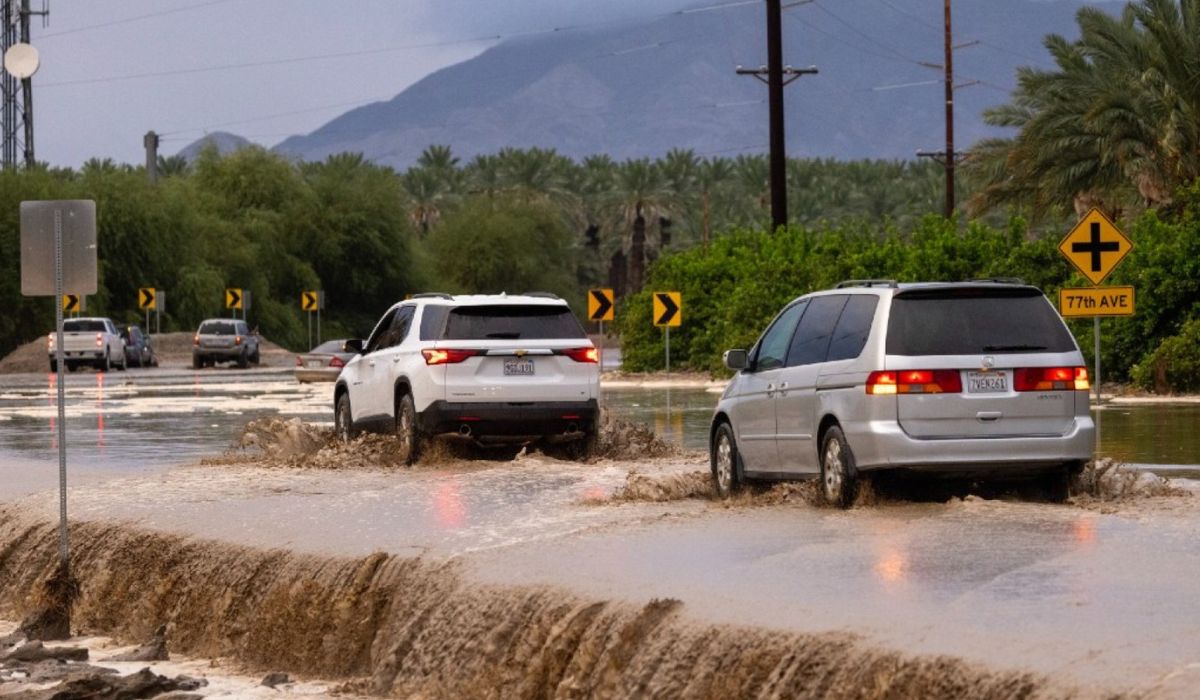As the “Entertainment Capital of the World,” Las Vegas is famous for its exciting nightlife, world-famous casinos, and spectacular entertainment. Underneath the surface of this thriving desert metropolis, however, the ever-present danger of floods is a rising cause for concern. Las Vegas is increasingly at risk of floods due to shifting las vegas flooding weather patterns and increased urbanization, an issue that requires urgent attention and careful preparation.
Understanding the Vulnerability
Due to its location in the Mojave Desert, Las Vegas has a dry climate with low yearly precipitation. Nonetheless, the rain that does fall typically comes in torrents that flood the city. Because they were built for dry weather, the city’s enormous concrete surfaces become a problem when it rains. The inability of the soil to absorb water causes destructive flash floods.
Climate Change and Extreme Weather Events
Extreme weather events have become more often and severe as a result of global warming, and Las Vegas is no exception. Flooding is a growing threat to the city as a result of the combination of increasing temperatures and changed precipitation patterns. The increased risk of flooding in Las Vegas is directly attributable to climate change, which must be recognized.
Historical Incidents: Learning from the Past
Las Vegas has a long history of flooding, as evidenced by a number of devastating floods in its past. Infrastructure, houses, and businesses were all severely impacted by the epic floods of 1975 and 1984. These occurrences highlight the critical need to develop effective flood mitigation methods and improve infrastructure to forestall future calamities.
Impact on the Community and Economy
The lives and livelihoods of locals and tourists alike are threatened whenever Las Vegas gets flooded. In addition to the obvious destruction of property, floods can cause delays in transportation, endanger public safety, and put a burden on emergency services. The loss of tourism money is devastating for the city’s economy, and the cost of restoration and recovery will run into the millions.
Mitigation and Preparedness
Las Vegas’s efforts to reduce flooding use a holistic strategy, focusing on infrastructure upgrades, drainage system upgrades, sustainable urban planning, public education, and public awareness. A significant part of lowering flood hazards can be played by spending money on flood-proof structures, parks, and reservoirs.
Community Involvement and Awareness
Building resilience requires educating the community on flood hazards and preparation. The ability to take preventative steps during flood disasters can be increased by educating residents on correct drainage techniques, flood insurance, evacuation routes, and emergency kits.
Government and Stakeholder Initiatives
In order to effectively manage floods, government agencies and local authorities must work together with a wide range of interested parties. Effective land-use planning, early warning systems, and sufficient money for infrastructure improvements are all necessary to counteract the risk of floods.
Conclusion
The growing risk of flooding in Las Vegas is alarming and requires swift action. Challenges are looming because of things like climate change, urbanization, and a lack of suitable infrastructure. Las Vegas can build resilience and adapt to this growing hazard through public awareness, policy reforms, and sustainable urban planning, guaranteeing a safer and more secure future for its people and visitors.
FAQs
Why does Las Vegas face a flooding threat despite being in a desert?
Because to its location in the Mojave Desert, Las Vegas only gets heavy rain on rare occasions. Due to the widespread concrete surfaces, the region’s drainage systems are unprepared to manage sudden downpours, increasing the likelihood of flash floods.
How is climate change contributing to the increased flooding risk in Las Vegas?
As a result of climate change, rainstorms are becoming more frequent and powerful than before A2. The potential of intense rainfall that can overflow a city’s drainage system and cause floods is rising as a result of the planet’s warming climate.
Are there historical instances of significant flooding in Las Vegas?
Yes, Las Vegas has been flooded multiple times in the past, with the worst floods occurring in 1975 and 1984. These events demonstrated the city’s vulnerability to flooding and the need for effective flood protection techniques by causing substantial damage to infrastructure, houses, and businesses.
How does flooding impact the community and economy of Las Vegas?
Flooding causes widespread disruption to daily life by compromising transportation, public safety, and emergency response infrastructure. Since tourism is such an important industry for Las Vegas’s economy, being prepared for and preventing floods is of the utmost importance to the city and its residents.
What measures are being taken to mitigate flooding in Las Vegas?
To reduce the risk of flooding, A5 suggests using flood-resistant building methods, sustainable urban design, and infrastructural upgrades. The city is also making investments in flood-awareness initiatives, green spaces, and reservoirs.











